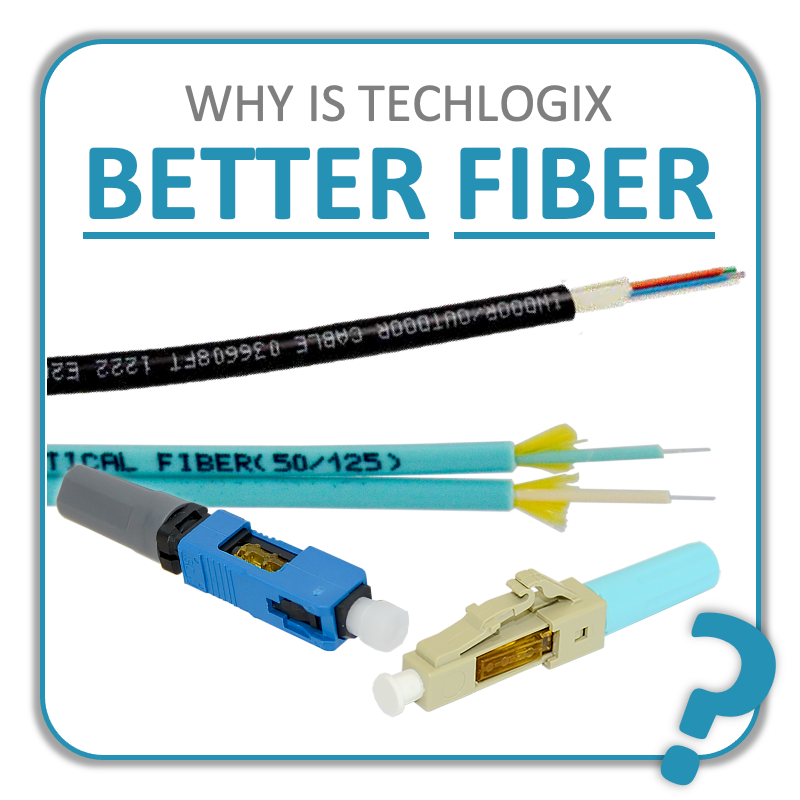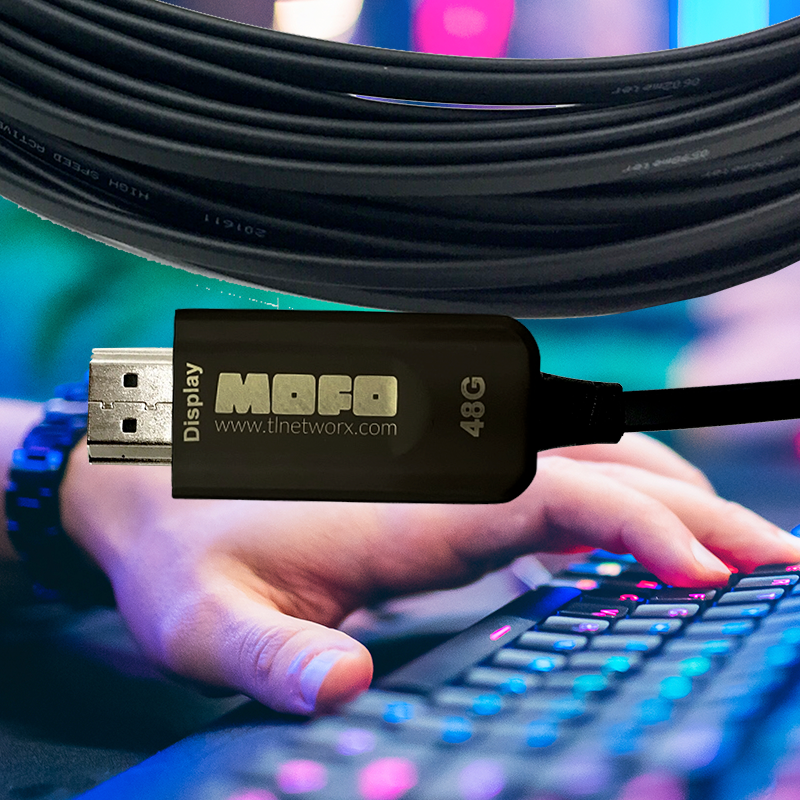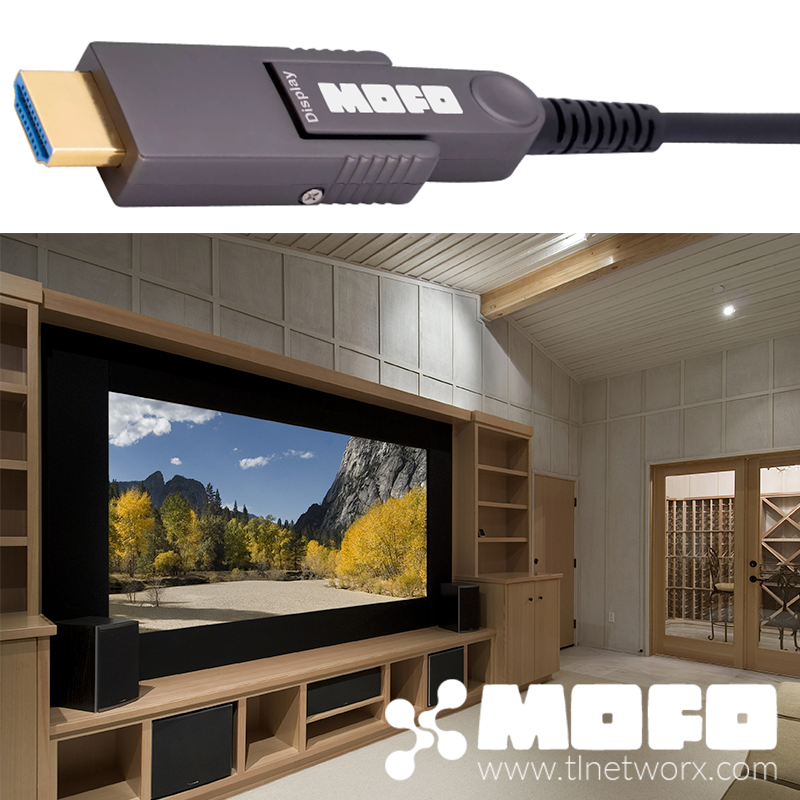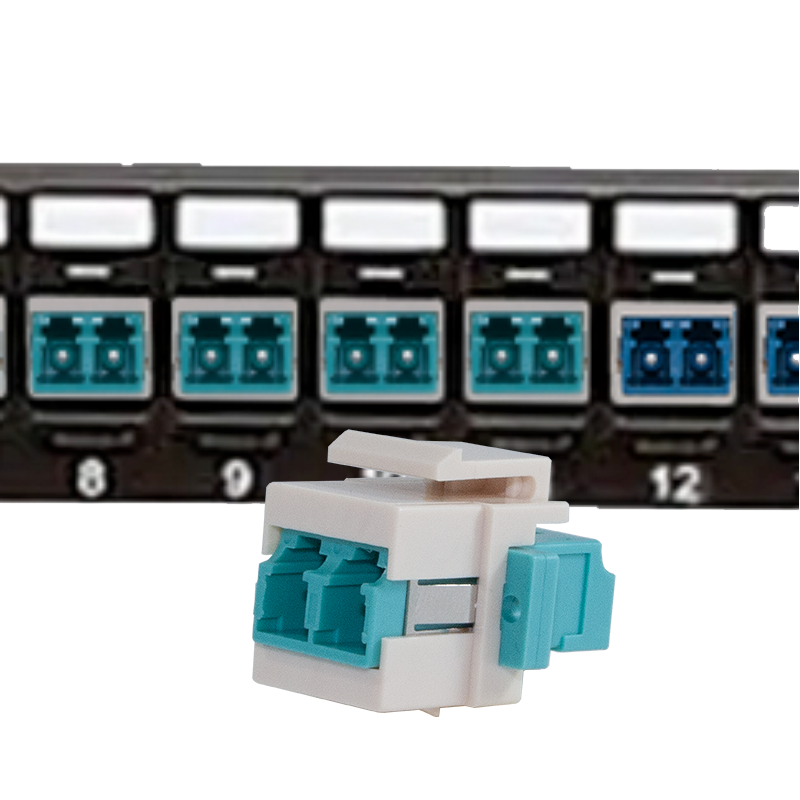Why is ECO Series™ fiber better?

There's an old adage: better parts make better product. TechLogix ECO Series™ fiber is no exception.
This article explores why ECO Series™ cable and connectors lead the industry in performance and value.
Better Cable
Fiber optic cable isn't all the same and anyone who's tried to terminate a discount cable has likely experienced brittle glass and ripped outer jackets.
The TechLogix ECO Series™ delivers better products with a superior installation.
Premium Corning® Bend-Insensitive Glass. All ECO Series™ cables are built in the United States with Corning® ClearCurve™ and SMF-28™ bend-insensitive optical glass. This means tighter bend radiuses, stronger pull ratings, and ultimately more durable optical strands that survive rough handling and termination in the field. Corning® is one of the largest optical glass manufacturers in the world and every ECO Series™ cable leverages Corning's 170 years' of experience.
Not convinced? Check out the below performance specifications:
- Typical bend rating equals the diameter of the cable
- Typical pull rating exceeds 200lbs when pulling by the aramid yarn (learn more in this article)
Of course, actual specifications vary by cable type (riser, plenum, ruggedized, armored, etc.), but I think you get the picture... ECO Series™ cables are designed for real-world installers and mission-critical installations.

Professional-Grade Cable Jackets. Have you ever pulled a cable just to realize the jacket snagged, cracked or ripped during installation? ECO Series™ cables don't skimp on build quality:
- Coated jackets for durability
- Installation temperature ratings from -40°C to 70°C (-40°F to 158°F)
- Riser, plenum, LSZH, tactical, and ruggedized jacket ratings
- Outdoor ratings with UV, water, and fungus resistance
Broad Compatibility with Tools, Connectors and Applications. Some manufacturers play games with the fiber inside of cables. They build with polymers or coat the optical glass with "proprietary" coatings to add strength. While this might make for a great demo, it can negatively affect signal bandwidth, limit compatibility with connectors and different termination systems, and force you to purchase expensive tools.
This becomes a significant issue when working with broadcast infrastructures, telecom and ISP feeds, and any other high-bandwidth or long-distance application. Such installations often require fusion spliced terminations and polymer-based fiber cables cannot be properly fusion spliced without removing all traces of plastic.
ECO Series™ fiber optic strands are made entirely with bend-insensitive glass, providing durability and compatibility with fusion spliced and other low-loss connector systems. In fact, ECO Series™ cables are 100% compatible with standard tools and connector systems, regardless of manufacturer.

Better Overall Value. Value shouldn't be judged only on the cost of the product -- labor hours, unnecessary redundancy and defect replacement play a significant role in the overall cost of any installation.
Often integrators pull six or twelve strand fiber when only two strands are actually required. They anticipate breakage during handling and build redundancy into the cost of the project. ECO Series™ cables survive rough handling, allowing you to pay for only what's needed. And with ECO Series™ there's a far greater chance your cables will integrate and operate for decades to come.
Better Connectors
Cable isn't the only factor in a high-performing fiber infrastructure -- connectors also play a critical role.
Historically, integrators chose between expensive fusion splice systems or messy epoxy-based systems. Today, most installations rely on snap-on mechanical connectors that are pre-polished and reusable. However, not all mechanical systems are made the same. Some require proprietary crimp tools and others can actually damage the optical cable unless perfectly terminated.
Mechanical connectors with a sliding latch system, for example, can place strain on the optical strand resulting in breakage during installation.
ECO Series™ connectors, on the other hand, leverage a push-button system and vertical pressure, ensuring optical strands are never compressed during installation and operation. This provides better longevity and better overall performance.

Plus, ECO Series™ connectors don't require any proprietary tools or epoxy, are reusable through five termination cycles, and are compatible with all standard fiber optic cables.
Learn more at www.tlnetworx.com.
View ECO Series™ cable and connector termination videos.




Comments